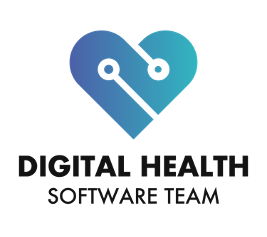Developing Accessible Digital Health Software
 Research team: Digital Health Software Team, University of Manchester
Research team: Digital Health Software Team, University of Manchester
As a digital health software team, our aim is to build software to support health research across multiple disease areas and conditions.
A key focus for us is co-designing websites and mobile apps with our target population to ensure the digital platforms that we build will be usable, useful and engaging. To do this, we work intensively with our end users to understand their accessibility needs and to create software that responds to their requirements.
We currently work across a digital health portfolio of 20+ research projects, many of which are funded by the National Institute of Health Research (NIHR) or the Medical Research Council (MRC) in the UK. Most of these projects are focused on building software to support under-served populations.
Across our projects, ‘under-served populations’ are defined in different ways, but within our current portfolio, ‘under-served’ includes people living with serious mental illness, people from economically deprived areas and people living with multiple chronic conditions.
Stages and methods of end user involvement
When we develop software, we typically co-design it with a sample of our end user population. For many of our projects, the end users are people living with a long-term health condition. We involve end users at every step of our software development life cycle.
A key part of the user research journey is to identify the accessibility needs of the target population. This could be, for example, identifying that we need to ensure the software is accessible on assistive technologies and/or that we need to increase the default font size of the text because people in our target population have visual impairments. We design and test for accessibility throughout the user research journey.
There are four key phases in the user research journey that we follow. At each phase we consider how we need to address digital health inequities by maximising the accessibility of the tools that we build.
- Discovery: Identify user accessibility needs to ensure solution/technology developed is fit for purpose.
- Alpha: Gather accessibility feedback on prototypes to ensure user needs are addressed.
- Beta: Allow users to try out the digital health software to test if accessibility needs are met.
- Live: Ensure routine checking and compliance with accessibility requirements.
Methods toolbox
Across each stage of the user research journey, we use different methods to ensure the needs of under-served populations are represented in the design and implementation of the software. Some of the methods we use to do this are described below.
Discovery
- Workshops: Interactive sessions where participants engage in discussions, collaborative activities, or interactive exercises.
- Focus groups: A qualitative research method that focuses on the participants’ perspectives and opinions.
- Interviews: Conversations with one or more participants, conducted to gather in-depth information, insights, or opinions.
- Think Aloud: Users verbalise their thoughts while interacting with a product, to reveal their mental processes.
- Simple usability testing: Small sample sites to objectively check accessibility needs.
Alpha
- Workshops: Interactive sessions where participants engage in discussions, collaborative activities, or interactive exercises.
- Focus groups: A qualitative research method that focuses on the participants’ perspectives and opinions.
- Interviews: Conversations with one or more participants, conducted to gather in-depth information, insights, or opinions.
- Concept testing: Assesses user reactions to new ideas or product concepts.
- Wireframe testing: Evaluates user interactions with simplified visual representations of a product’s layout and functionality.
- Prototype testing: Gather user feedback and evaluate the functionality, aesthetics, and user experience of a near-final digital prototype functionality.
- User polls and surveys: Gather quantitative data through structured questions.
- A/B Testing: Compare two versions of a design to determine which performs better with users.
- Card Sorting: Organise and structure content by having users categorise information.
- 5 Second Testing: Gauge users’ immediate impressions of a design.
- Tree Testing: Assesses the findability and effectiveness of information architecture.
Beta
- Accessibility beta-test review questionnaire: A series of questions to discover any new accessibility issues.
- Workshops: Interactive sessions where participants actively engage in discussions, collaborative activities, or interactive exercises.
- Focus groups: A qualitative research method that focuses on the participants’ perspectives and opinions.
- Interviews: Conversations with one or more participants, conducted to gather in-depth information, insights, or opinions.
Live
- Ongoing accessibility reviews based on project-specific schedule.
Benefits of involving end users
- Users are consulted about their specific needs for engaging with digital tools.
- We explore how people engage with technology by asking them to engage with prototypes of the software as it is being developed.
- We develop the software iteratively and in partnership with our end users so that we can assess if the tools we have built are responding to the accessibility needs identified.
- We ask people what their accessibility needs are rather than make assumptions about their needs. For that, we work closely with researchers to explore software accessibility needs, as well as how the software would enable accessibility to healthcare services.
- We involve people throughout the software development life cycle so that we can respond to shifts and changes in needs or correct misinterpretations along the way.
Other things our team (could) do to promote digital health equity
- Develop an expert diverse accessibility advisory group to help guide our accessibility reviews, policies and activities.
- Keep up to date with emerging digital health equity research.
- Explore how digital innovations can better support accessible software design.
More information
Learn more about the work of the Digital Health Software and Platforms team.





0 Comments